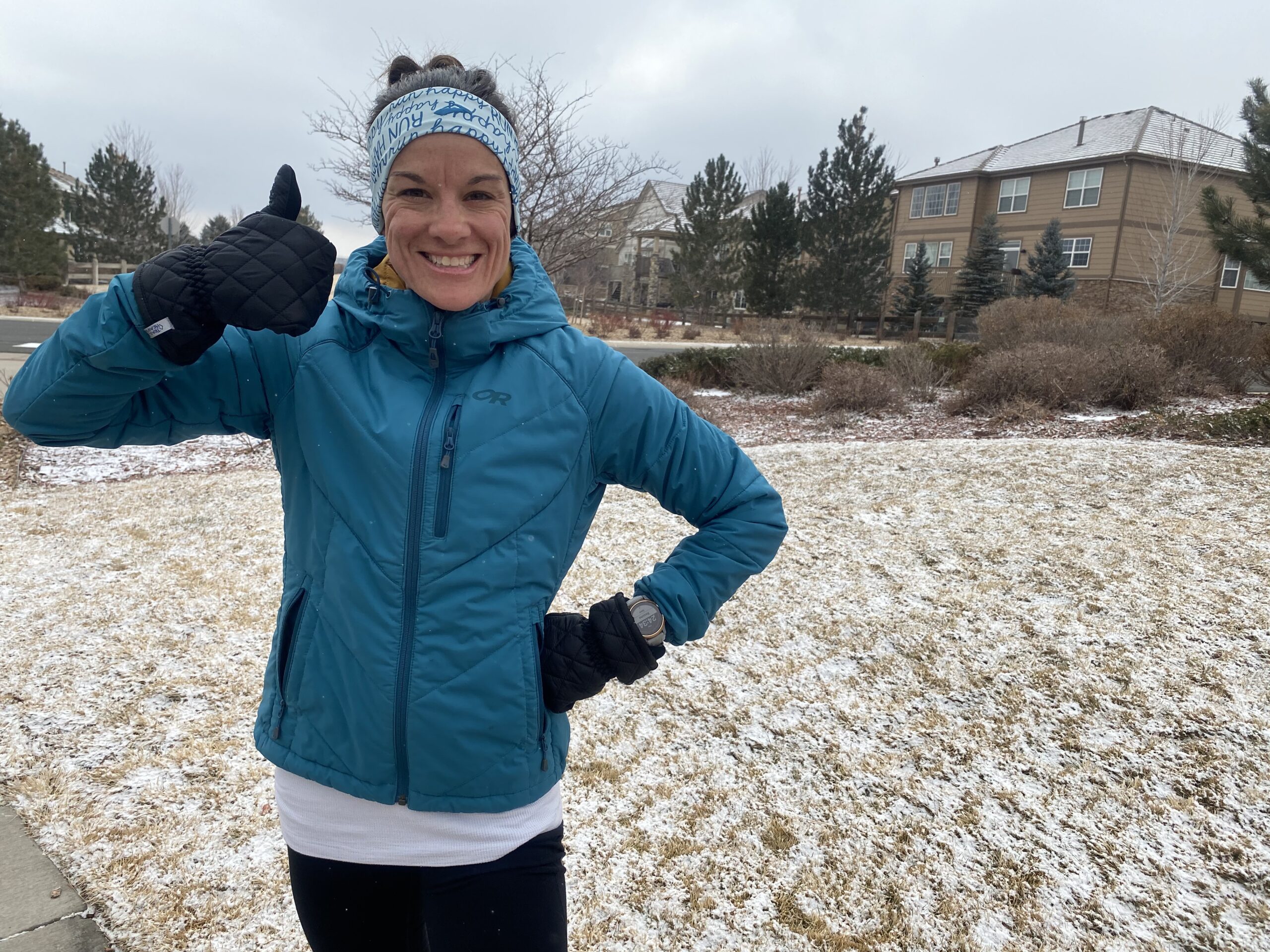Perhaps the scariest thing about running a marathon is wondering how in the world you’re possibly going to make it the entire way without walking or even stopping altogether. The last thing you want is to spend all your precious disposable time training for a marathon only to not even be able to finish all 26.2 miles. And even though walking is still a worthy way of earning that shiny finisher’s medal, many runners who are taking on the marathon want to run every single step. With enough time, focus, and the right training, you will begin building your running endurance to be ready for a marathon!
Here we’ll go over how the following steps will help you increase your running endurance:
- Train for Shorter Races First
- Start Your Marathon Training Early
- Slow Down
- Run More Miles
- Include Speed Workouts
- Make Rest and Recovery a Priority
- Prepare to Push Past the “Wall”
Worried you don’t have what it takes to build your endurance to be marathon ready? You do!
Anyone Can Increase Their Running Endurance
One of the comments I get a lot goes something like this, “I could NEVER run a marathon! I get tired from running even just one mile!” Mind you the people who say this are often very fit people…they just aren’t runners. Yet.
When people start running for the first time, they are often winded within a few minutes and then are reduced to a walk to catch their breath. This is completely normal for someone who isn’t accustomed to the demands of running.
Generally, these people are probably running too hard. Slowing down will help you be able to go much further, which we’ll discuss in depth below. You can always add in more speed later, but as you’re building your endurance, you have to give your aerobic engine (think heart and lungs!) time to adapt.
So many people say they hate running, and I’m not here to convince you to love it. Everyone has different types of exercise that keep them coming back for more. I’m just saying that everyone is capable of building up the endurance to accomplish any running distance. Even 26.2 miles worth.
Starting small and slow is the key. Not sure you have what it takes to run a whole marathon? Trust me, you do. Follow these 7 ways to make it happen.
The 7 Best Ways to Increase Running Endurance to Prepare for a Marathon
1. Train for Shorter Races First
Chances are you’re here reading this because you’ve already run the shorter races and you’re ready to train for your first marathon. Or maybe you’ve run one before and you’re ready to tackle one again…only better this time! But whether this is your first or you’re coming back to it, be sure you build your endurance up gradually to prepare for shorter race distances first.
Even if you’ve run in the past, if you’re not in shape to run a 5k yet, you’ll want to start there. Or if you’ve been doing great with 5k/10k training, then the next logical place to move up to is a half marathon.
Starting from scratch to train for a marathon will take you much longer to prepare. And chances are you won’t start as soon as you need to. Setting up incremental goals will help you be more successful and it will also be a lot more fun way for you to get there.
Feeling confident with a particular distance means you have the base you need to start building endurance for the next distance up.

2. Start Your Marathon Training Early
Go ahead and search “12-week Marathon Training Plans” and you will find plenty. Heck, I’ve seen ones telling you they can get you ready in 10! It’s like 7-minute abs all over again.
This is a great time to remind you that just because something is easily found on Google doesn’t make it a good idea. Unless you truly have been doing a lot of base building before those 12 weeks, and have a big base already (like at least 40 miles per week), this is NOT what you want to do.
If running an entire marathon is what you’re seeking, and you want to build the endurance to do so, you need TIME.
Top marathon training plans (I discuss several in this post), don’t have you training for a marathon in less than 16 weeks. And in my opinion, that is even pushing it. For my current cycle, as I train for the Boston Marathon, I’m using a 20-week plan. These are 20 focused weeks of training with all the phases I need to successfully build my running endurance gradually, get plenty of speed workouts in, while also staying injury-free.
Not only will those short training programs NOT prepare you to run an entire marathon, it’s also very likely that you will get sick or hurt. Trying to cram the mileage needed to prepare for a marathon into just 10-15 weeks’ time often means the build is not gradual and you’re requiring your body to do things it’s not ready for.
3. Slow Down!
It is completely NORMAL to feel out of breath when you start running and there is likely nothing wrong with you. Your heart and lungs are basically screaming out, “What the hell are you doing to us?!” And most of the time runners can’t push past a certain distance because they are going way too fast.
So whether you can’t run a mile yet, or you have plateaued at a particular distance, slowing down will help.
Runners often think they can just keep pushing the distance at the same pace they could run for shorter distances. But it doesn’t work that way. Plus, endurance isn’t about building speed, it’s about being able to run for longer periods of time.
Here is a perfect example of when training at too fast of a pace blew up in my face:
In 2017, my husband I started training for a marathon together. I hadn’t run one in 10 years and he had finished his first the year prior but with a time he wished would’ve been better. Bottom line – neither of us had ever trained the way that we should have. We were ready to get in the miles we needed to build endurance and prepare. But here was our problem.
We were both capable of running sub 8-minute miles for quite a few miles in a row. So we thought that if we just increased our long run by 1 mile each week, we’d have no problem maintaining a pace that hovered around 8-minute miles. We did fine with this up until 11 miles, and then the day we did 12, we couldn’t hold on. Next week was more of the same, but we weren’t too far off. The day that we had a 15-mile run, I started walking around mile 13 and he gave in soon after that. We were discouraged.
First of all, we had no business thinking we could run a marathon averaging an 8-minute mile. That’s not what our current level of fitness was going to allow us to do.
Many new marathon runners make the mistake of running long runs too fast. They should be AT LEAST 1 minute slower than your marathon goal pace.
It seems counter intuitive that running long runs significantly slower than your marathon goal pace could result in the time that you actually want, but when you train correctly, it will pay off.
If you don’t trust me on this, once you read here and here, you’ll see that the experts agree. I also have an entire blog post dedicated to this important topic: “Train Slower to Run a Faster Marathon.”
This doesn’t mean you won’t ever include faster miles within your long run, but the majority of miles should be at your easy pace (75 – 80% in fact!)
Not sure what your current fitness level is or what an easy pace should be for you? I highly suggest completing a 2-mile time trial and then reading my post The Running Time Trial that tells how to utilize the Mcmillan Calculator to figure out paces.

4. Run More Miles
It is a scientific fact that in order to build your running endurance, you need to run a lot. Running volume matters, as outlined in this study. Your body gets better at something by doing it over and over again. Ever tried to do more push ups? How were you able to start doing more? By doing more of them over a period of time. Though other factors contribute, nothing helps you get better at push ups than by doing more push ups.
So even though cycling or swimming are excellent forms of exercise to build your aerobic engine, they will never do as much for your running as more running will.
Once you’ve gradually built up a running base and established a routine for doing your best at 5ks and 10ks, it’s time to start upping the mileage to prepare for a half marathon and ultimately a marathon.
Marathons are VERY different than halves, however. Whereas you can run an entire half marathon with a lack of proper mileage (though it won’t be close to your potential), trying to do that for a marathon is about the worst thing you can do. Being able to run an entire marathon without walking comes from a foundation of higher mileage.
I’m not saying you need to run 60+ mile weeks, but building gradually up to somewhere in that realm will increase your likelihood of being able to maintain your goal race pace through the duration of your marathon. Read my article, “Want to be prepared for your marathon? Run More Miles,” to know exactly the best way to go about this.
5. Include Quality (Speed) Workouts
Quality runs generally involve speed. These days can be both intimidating and exciting at the same time. Marathon running includes a lot of easy-paced running, so when it’s time to get the fast-twitch muscles working, it can be a little scary!
So we know that implementing speed sessions in your marathon training can make you faster, but how can they improve your endurance?
Well for one, speed sessions are usually done in the middle of a solid piece of mileage. My quality days usually end up being at least 8 miles long when you include a good warm up and cool down.
And two, running fast will build up your endurance by becoming more efficient. Speed runs improve your VO2 max, which is the amount of oxygen your body can utilize while exercising. You’re also building muscle while doing so which allows your body to adapt to paces that were previously more difficult.
It’s important to remember that this is all a process, but over time, implementing a weekly speed workout into your sessions will allow you to sustain marathon pace for a longer period of time. And that equals more endurance!
6. Make Recovery and Rest a Priority
Recovery, Active Recovery and Rest are all part of allowing your body to reap the benefits of the hard work you are demanding of it. I think most runners are the go-getter type and therefore, usually think more is better.
Though a great trait to have, if you approach training with this type of attitude all the time, you’ll likely run yourself into the ground. Whether it’s because the constraints of training get to be too much for you, or your body won’t hold up, without giving yourself some down time it will be difficult to get to the starting line to have enough endurance to run 26.2 miles.
Here’s the difference between recovery, active recovery, and rest and how you can implement them into training to increase your endurance.

Recovery
Recovery is what you’re doing after your run to get your body back to a comfortable place. It can be easy to think, “Phew, I’m done with my run…that’s it for the day!” But what you do after your run is actually really important.
Recovery stretching, foam rolling, and applying heat or ice. Give uncomfortable or tight spots some extra love!
Hydration and nutrition matter, too. What you eat after you’re finished running matters a lot. A 3:1 or 4:1 ratio of carbs to protein is a good rule of thumb. Chocolate Milk, toast with eggs, or a protein drink work great for this. And don’t forget to drink lots of water!!
Taking the time to promote recovery allows your body to be ready to increase mileage from week to week which is what you need to build endurance.
Active Recovery
Hard running workouts (think speed sessions and long runs) are a necessary part of training. But intense exercise puts a lot of physical stress on your body, and creates an inflammatory response, as noted in this article from NBC News. This is why so many runners turn to pain relievers to reduce the inflammation as a way to keep running through the discomfort.
But that’s the wrong way to go about it and I discuss it all here: Advil or Tylenol Before Running: Not as Harmless as You’d Think.
Instead, giving your body a break in a way that still allows you to increase endurance and work toward your goal is a great way to keep your body healthy while letting the fitness improvements from the hard workout have time to sink in. Active recovery is all about continuing circulation but in a light to moderate way.
For runners training for a marathon, the best way to do this is by easy jogging the day after a hard workout. 3-5 miles is a good range to aim for. Lots of runners wonder if active recovery days can include other types of exercises. They definitely can, but the benefit of light running for active recovery means your adding to “time on your feet.” All that discussion about mileage matters? This counts!
Rest
This one’s as simple as it sounds. Take a load off. You’d be surprised how much magic happens on the rest days that you can’t see. I suggest working 1 rest day into your weekly routine – usually the day after an active recovery day.
But that doesn’t mean you can’t take one when you feel like you need it. Listening to your body has never been more important. Trying to push through when you are feeling unwell or sleep deprived will do more hard than good. Trying to push through will affect your running going forward which can delay the endurance progression you’re trying to achieve. If you feel like you need a break, take one!
7. Include Components to Help Get You Through “The Wall” (Those Last 6.2 Miles)
Oh the wall. It’s about as terrible as it sounds. The thing about marathon training is that you rarely run more than 21 at a time, which means you’re sort of left to your own devices that last stretch of your marathon race. And though it looks short on paper or a map, it feels like anything but once you actually get there.
I recently wrote about this topic in depth, so if you want the thorough version and all 8 tips to prevent this from happening: read here.
Here’s the short version:
Having marathon endurance means you’re prepared to go all 26.2 miles while also hitting something close to your goal pace. In order to get through those last tough miles the number one thing you can do (in addition to what I already listed above) is to teach your body to burn fat for fuel. This means running more training miles with limited fueling (and eventually none at all). At a minimum, beginners can do this for shorter runs under 2 hours. Meaning you don’t take in any calories during those runs.
It’s all about limiting the glycogen (carbs essentially) you’re giving your body to get you through so your body gets better at burning fat for fuel. According to The Science of Running, “Training in a glycogen depleted state produces more stress than normal. The body then adapts.” Just think how great your body will do when you do feed it carbs for your race!
My coach is utilizing this strategy in my current training during a few of our long slow runs (2.5 hours+). With that said, I have done just fine up until now without ever doing a long run without nutrition. So I’m not saying you NEED to do this. But going out for short easy runs without eating beforehand or not fueling during a run of less than 2 hours can help significantly.
If you ARE more experienced and you want to be able to endure a faster pace in your marathon without hitting a wall, this is a good strategy to start utilizing during your long slow runs…even the ones hitting the 3-hour mark. For an in-depth look on how to go about implementing this, Mcmillan Running provides an excellent outline.
Featured Image: Run Revel Mt. Lemmon







